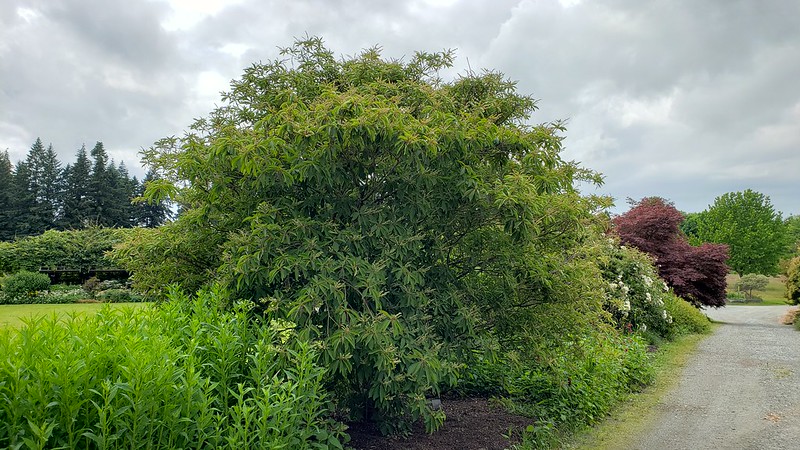The flowering shrub Summersweet is a slow-growing shrub that provides interesting color as well as valuable nectar for beneficial pollinators late in the growing season. The medium-sized height (8-12 feet for most varieties) and upright growing habit make summersweet a great choice for adding height to a smaller garden. The brilliant fall foliage looks best against other colorful deciduous trees and shrubs for a blaze of color until leaf drop. The smaller dwarf cultivars are also highly efficient at attracting pollinators and are useful in areas that may stay wet throughout the year.

Photo by Wendy Cutler, unmodified, Flickr, copyright CC BY-SA 2.0 DEED
Shrubs To Plant With Summersweet
Summersweet is a native shrub that mixes well with other native plants as part of a wildlife-friendly planting. Shrubs that do not mind having wet feet are the best partners. Ninebark, red twig dogwood, weigela, cranberry bush, huckleberry bush, meadowsweet, and viburnum can all be planted with summersweet to create a native mixed hedge that will require little maintenance or pruning to thrive and attract wildlife to your garden. Summersweet can also be planted in the wetter zones of a rain garden design, or planted as part of a foundation planting near downspouts or other wet areas.
Perennials To Plant With Summersweet
Summersweet pairs best with native and pollinator-friendly herbaceous perennials. Coneflowers, shasta daisies, tall garden phlox, agastache, and Joe Pye weed all look great next to Summersweet’s medium green foliage and spiky flowers. Ornamental grasses and aronia are stunning next to summersweet’s yellow and orange fall foliage. Plant summersweet with other rain garden plants like yarrow, Siberian iris, and marsh marigolds in full sun and in damp or boggy soil. Because Summersweet is not fussy about soil type or pH, it can also be grown basically anywhere in the garden as long as supplemental water is readily available.

Photo by Wendy Cutler, unmodified, Flickr, copyright CC BY-SA 2.0 DEED
Annuals To Plant With Summersweet
Most types of summersweet become medium or large spreading shrubs. They tend to send out suckers, which can be removed by pruning. Some hard-working annuals to grow near the base of summersweet include bachelor's buttons, larkspur, amaranthus, and lobelia. All of these plants appreciate moist soil and partial shade. Larger growing annuals like cosmos, snapdragons, and zinnias will grow well in drier locations near summersweet. Their taller stature looks good with the larger varieties of summersweet and will provide plenty of seed and cover for wildlife through the winter.
Best Companion Plants For Summersweet in Containers
Clethra, the Latin name for Summersweet shrub, is not often grown in containers due to its large mature size. Because this shrub is fairly slow growing, it can be grown in a container for 2-3 years before it will need to be relocated to a garden bed or shrub border. Use a potting mix containing ample compost or peat moss to increase organic matter and moisture retention. Plant spiller and filler plants that will withstand any sucker growth while also thriving in moist soil. Plant nierembergia, coleus, and licorice plant around the edges of a large planter with summersweet in the middle as the thriller element.
Plants Not To Grow With Summersweet
Summersweet will not grow well in soil that dries quickly or in locations exposed to heavy winds or salty air such as along the ocean coastline. Cacti, yuccas, native prairie flowers, red hot pokers, and other waterwise plants make very poor companions for summersweet. These plants need to dry out between waterings and will not tolerate the wetter conditions needed to grow summersweet.
Best Plants To Grow With Summersweet
Summersweet looks its best planted in a naturalistic setting designed to support wildlife. Its spectacular fall foliage and upright shape are easy to mix with all kinds of other native and pollinator-friendly plants. Coneflowers, Japanese maples, tall and short ornamental grasses, and cosmos have a breezy, natural feel to them and can make any garden more attractive to your regional wildlife. Allowing the seed heads to remain through winter further gives the feeling of a wild but controlled landscape.
 |
Author Robbin Small - Published 10-03-2023 |
